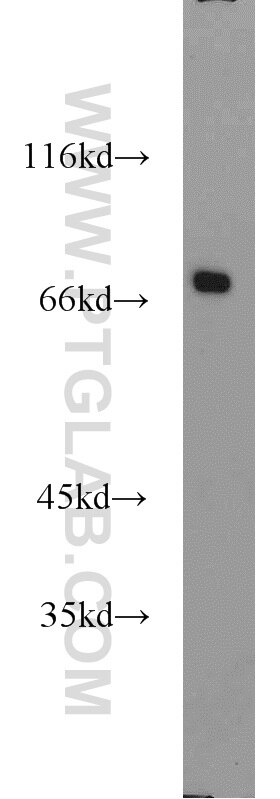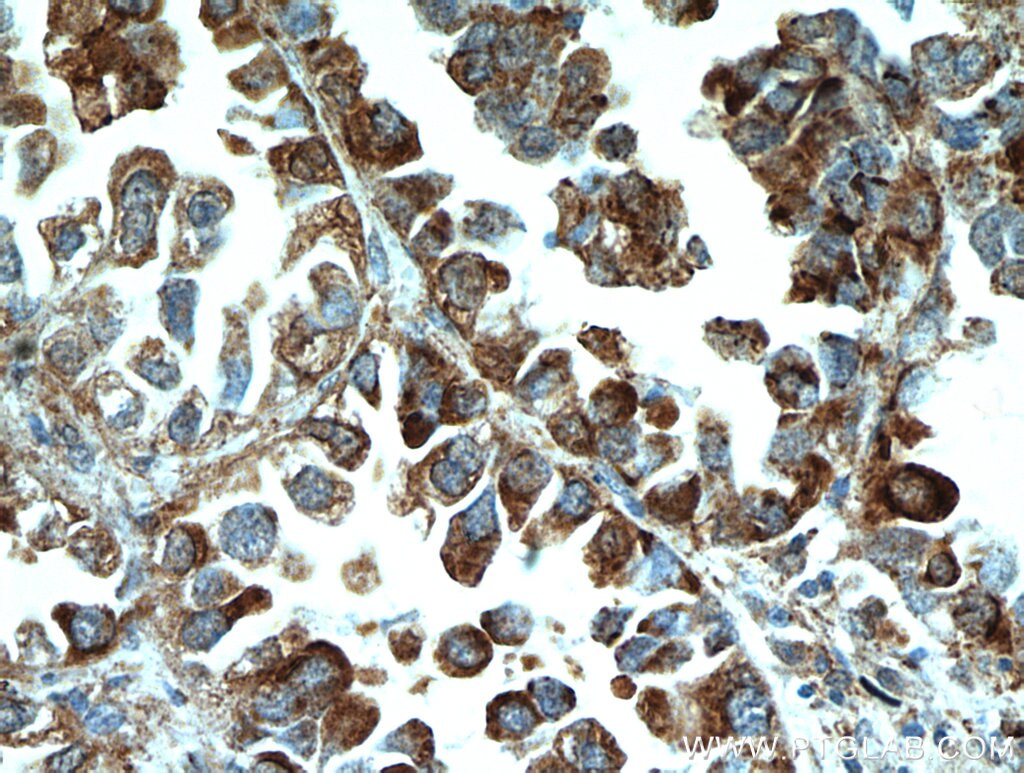Anticorps Polyclonal de lapin anti-CADM1
CADM1 Polyclonal Antibody for WB, ELISA
Hôte / Isotype
Lapin / IgG
Réactivité testée
Humain, rat, souris
Applications
WB, ELISA
Conjugaison
Non conjugué
N° de cat : 14335-1-AP
Synonymes
Galerie de données de validation
Applications testées
| Résultats positifs en WB | tissu hépatique de souris, cellules A549, tissu placentaire humain, tissu pulmonaire de souris |
Dilution recommandée
| Application | Dilution |
|---|---|
| Western Blot (WB) | WB : 1:500-1:1000 |
| It is recommended that this reagent should be titrated in each testing system to obtain optimal results. | |
| Sample-dependent, check data in validation data gallery | |
Applications publiées
| WB | See 6 publications below |
Informations sur le produit
14335-1-AP cible CADM1 dans les applications de WB, ELISA et montre une réactivité avec des échantillons Humain, rat, souris
| Réactivité | Humain, rat, souris |
| Réactivité citée | Humain, souris |
| Hôte / Isotype | Lapin / IgG |
| Clonalité | Polyclonal |
| Type | Anticorps |
| Immunogène | CADM1 Protéine recombinante Ag5621 |
| Nom complet | cell adhesion molecule 1 |
| Masse moléculaire calculée | 49 kDa |
| Poids moléculaire observé | 49-60 kDa |
| Numéro d’acquisition GenBank | BC047021 |
| Symbole du gène | CADM1 |
| Identification du gène (NCBI) | 23705 |
| Conjugaison | Non conjugué |
| Forme | Liquide |
| Méthode de purification | Purification par affinité contre l'antigène |
| Tampon de stockage | PBS avec azoture de sodium à 0,02 % et glycérol à 50 % pH 7,3 |
| Conditions de stockage | Stocker à -20°C. Stable pendant un an après l'expédition. L'aliquotage n'est pas nécessaire pour le stockage à -20oC Les 20ul contiennent 0,1% de BSA. |
Informations générales
CADM1 (cell adhesion molecule 1), also referred to as SgIGSF, Necl-2 or TSLC-1, is a cell adhesion molecule belonging to the immunoglobulin superfamily. It can mediate homophilic and heterophilic cell-cell adhesion. CADM1 is expressed by a variety of cells including neurons, mast cells, spermatogonia, pancreatic islet cells, epithelial cells such as lung alveolar cells and biliary epithelial cells. CADM1 is involved in carcinoma pathogenesis and the expression of CADM1 is frequently down-regulated in various tumors derived from epithelial cells. It acts as a tumor suppressor in non-small-cell lung cancer (NSCLC) cells. (PMID: 18332875; 17326163; 20340131)
Protocole
| Product Specific Protocols | |
|---|---|
| WB protocol for CADM1 antibody 14335-1-AP | Download protocol |
| Standard Protocols | |
|---|---|
| Click here to view our Standard Protocols |
Publications
| Species | Application | Title |
|---|---|---|
PLoS One Necl-4/SynCAM-4 is expressed in myelinating oligodendrocytes but not required for axonal myelination. | ||
Onco Targets Ther miR-424-5p Promotes Proliferation, Migration and Invasion of Laryngeal Squamous Cell Carcinoma. | ||
Oncol Lett miR-214-3p promotes the proliferation, migration and invasion of osteosarcoma cells by targeting CADM1. | ||
BMC Cancer CADM1 impairs the effect of miR-1246 on promoting cell cycle progression in chemo-resistant leukemia cells | ||
Fish Shellfish Immunol Mucous cell histopathology and label-free quantitative proteomic analysis of skin mucus in fat greenling (Hexagrammos otakii) infected with Vibrio harveyi | ||
Adv Healthc Mater Nanointegrative Glycoengineering-Activated Necroptosis of Triple Negative Breast Cancer Stem Cells Enables Self-Amplifiable Immunotherapy for Systemic Tumor Rejection |









